As the famous proverb goes, “one man’s hero is another man’s tyrant”. Dictators have brought fear and grief upon the suppressed population throughout history.
Dictatorship, force, and the systemic maltreatment of political enemies to stay in power go back to ancient civilization. However, in modern history, dictators are equal to an actual violation of human rights and brutality.
History is proof that dictator-led countries are directly linked with extreme poverty, oppression, and human rights abuse.
Dictators seem to use intimidating strategies to enforce their audience’s obedience to maintain absolute power.
The country usually suffers from increased mental illness rates, decreased health and life expectancy, famine, poor education, and other problems.
They are infamous for widespread poverty and the ruthless killing of many innocent people to abolish free speech and democracy.
While we have witnessed and heard about many great leaders such as Dr. Martin Luther King and Nelson Mandela, history has had its fair share of highly evil leaders.
Some of the most brutal dictators in the pages of history are mentioned below:
10. Leopold II of Belgium
Content
| Life | April 9, 1835 - December 17, 1909 |
| Reign | December 17, 1865 - December 17, 1909 |
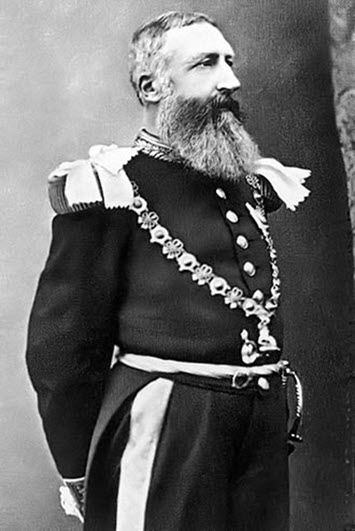
Leopold II was a notorious Belgian King. In 1885, he gained his private property in Congo in the Berlin Conference when Africa was divided among European powers.
Leopold ordered the building of a considerable number of buildings, urban projects, and public works, with the profits generated from the population of Congo and exploitation of natural resources.
These projects earned him the title of “Builder King.” However, the majority of the funds for these projects came from the brutal abuse of the Congo Free State.
He was always in it for the money, right from the beginning, digging out the maximum amount of wealth from his vast colony.
Besides, he was famous for exploiting labor from the Congo that was done in the name of Belgium. The laborers were forced to work in mines, collect ivory exported, and were exposed to violence to keep the Congolese in line.
If not enough, he ordered his private army to burn the villages of rebels and kill the ones who were disobedient.
During his reign, millions of the Congolese population, including children, were mutilated, killed, or died of disease.
He is responsible for the death of about ten million people in Congo. Soon, things got out of hand that he was compelled to hand over the colony to the Belgian state in 1908.
9. Kim II Sung
| Life | April 15, 1912 - July 8, 1994 |
| Reign | 1949 - 1994 |

Kim II Sung was a communist dictator of North Korea and became the President from 1972-1994.
Despite the official name “Democratic People’s Republic of Korea” for North Korea, the people were treated as slaves with leadership going from father to son and democracy not seen in the farthest site.
In 1950, Kim II Sung invaded South Korea and was responsible for being the cause of death of around 3 million people.
This included 15% of North Korea’s population, where he executed all the officers and rivals who fought with and against him in the Korean war.
US troops and other UN forces resisted his effort to spread his rule. However, it was only through enormous Chinese support that Kim II Sung was able to resist the further invasion of North Korea. In 1953, the Korean war ended in a draw.
Meanwhile, his regime captured around two hundred thousand political prisoners and executed them in concentration camps.
He was known to kill anyone who spoke against the regime or made minor mistakes that could drop his reputation down on the floor.
There is widespread poverty and famine, killing millions as the Stalinist economic policies and general repression came into effect.
8. Augusto Pinochet
| Life | November 25, 1915 - December 10, 2006 |
| Reign | December 17, 1974 - March 11, 1990 |
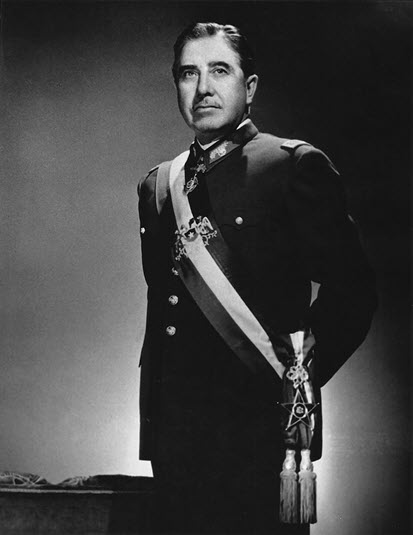
General Augusto Pinochet Ugarte was a brutal dictator who repressed and reshaped Chile for almost twenty years.
In 1973, he overthrew Chile’s government-backed up by the US coup that collapsed the Marxist government of President Salvador Allende.
The US provided the military government with material support after the coup. This made many of Pinochet’s officers paid contacts of the US military despite some being known to be involved in the abuse of human rights.
The United States provided the operation with significant organizational, financial, and technical assistance. He then led the country into a period of prosperous economic growth.
He was an infamous symbol of corruption and human rights abuse. About 35000 people were tortured and numerous others disappeared under his regime.
The disappearing strategies of the enemies of the Pinochet regime were strategically carried out during the first 4 years of military rule. The people who disappeared were held in secret, tortured, and then most were never seen again.
Pinochet gave up his presidency in 1990 after the Chileans voted against the continuity of his presidency in votes.
Until 1998 he held his position as the commander in chief of the army. He exerted considerable influence over the democratically elected governments that replaced his rule with that power.
Pinochet organized a vote to authorize a new constitution, replacing the old one drafted during Arturo Alessandri’s presidency. It created new establishments such as the controversial National Security Council (COSENA) and the Constitutional Tribunal.
Along with that, it approved an eight-year presidential period and a single-candidate presidential poll. Around one million were forced to flee the country during Pinochet’s reign.
The government trialed him for human rights violations in the early 2000s; however, the court ruled him as mentally unfit for the trial. He died when he was 91 year-old after surgery following a heart attack.
7. Saddam Hussein
| Life | April 28, 1937 - December 30, 2006 |
| Reign | 1979 - 2003 |

Saddam Hussein Abd al-Majid al- Tikriti was the President of Iran from 1979- 2003. He was known for his control, power, and dictatorship at the cost of high numbers of human blood.
In 1979, Saddam officially gained power, although he was already the practical head of Iran for several years. He suppressed several movements, especially the Shi’s and Kurdish movements.
This movement was meant to overthrow the government, gain independence, and sustain power during the Iran-Iraq and Gulf Wars.
He was known for applying terror against his people and planted and executing the brutal genocide against the rebels fighting against his regime.
His enemies included the Kurds, Shabaks, Mandeans, Assyrians, and other ethnic groups. Around two million people died under his regime.
Status, power and rights, and deliberate marginalization of certain groups were determined by religion and ethnicity. Ba’thism, in the beginning, failed to gain popularity in Iraq since it did not immediately appeal to the large Shia and Kurdish population.
After Saddam Hussein gained power, Ba’thism became the predominant political ideology in the country. It followed the genocidal and suppressive policies towards the Kurds, Shia Muslims, and other ethnic groups.
Hussein attacked Iran in 1980, and the war ended in a draw with one million dead. His army used mustard, nerve gas, and poisonous chemicals, causing massive deaths.
In 1990, he invaded Kuwait, leading to the First Gulf War and the death of another eighty-five thousand. Over one- hundred fifty thousand deaths took place in the uprisings after the war.
Widespread destruction of infrastructure during the war hurt the Iraqi population. Electricity production was less than a quarter of the pre-war level even years after the war.
Sewage flew directly into the Tigris River, which was the source of drinking water due to the destruction of water treatment facilities. This caused widespread disease, and Western nations provided funds to help tackle the problem.
However, those funds were diverted to maintain Saddam’s military control over the country.
Saddam Hussein asked his men to torture and record videos of victims to watch during his dinner time. All this continued till he was overthrown by American and Allied forces in 2003 AD, and finally, in 2006, he was hanged till death.
6. Joseph Stalin
| Life | December 18, 1878 - March 5, 1953 |
| Reign | 1922- 1953 |
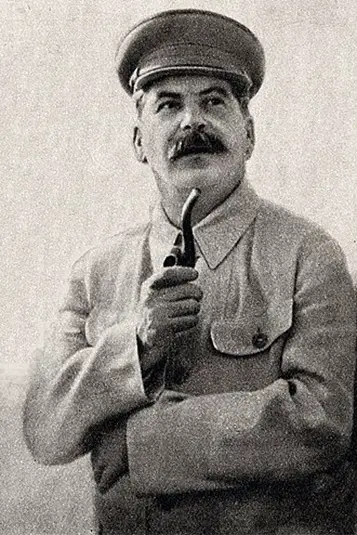
Joseph Stalin was a Soviet leader born in Georgia who rose to power after Lenin’s death in 1924. He was a paranoid man who cruelly suppressed his political enemies and suspected opponents.
He got the name Stalin when he was a revolutionary, and it is derived from the Russian word for “steel” combined with “Lenin.” Lenin, before he died, wrote a testament recommending Stalin to be removed from power.
He referred to Stalin as a “course, brutish bully” and formed the Gulag slave labor camp where criminals and political prisoners were sent to work as slaves.
Later, he befriended the United States and Britain against Germany and was called the evilest dictator, causing more than twenty-three million deaths.
To industrialize the country, Stalin established a succession of Five-Year programs and forced collectivization of agriculture, leading to widespread famine.
This plan concentrated on increasing heavy industry and collectivizing agriculture at the cost of a massive fall in consumer goods.
His attempt to bring more people in to the industry was successful, doubling the number of workers and resulting in a massive increase in the production of capital goods.
In Ukraine, he had caused the death of around three million people. He either seized the land or killed anyone who opposed the farmers.
The “Great Terror” followed, involving numerous purges of the intelligentsia, the party apparatus, armed forces, and society where whoever opposed Stalin was killed.
Millions of Russians were killed or sent to forced labor camps where people worked till death due to starvation and disease.
He purged almost all senior Red Army officers shortly before Hitler attacked, ensuring the miserable performance and horrific losses in the early stages of World War II.
He died in the early 1950s while he was planning another bloody terror upon the harassed nation.
5. Pol Pot
| Life | May 19, 1925 - April 15, 1998 |
| Reign | 1975 to 1979 |
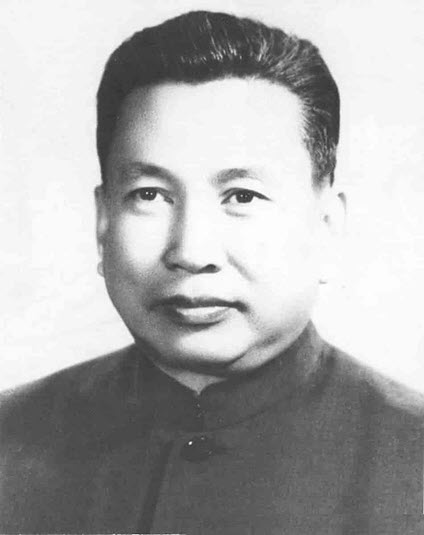
The chief of the Khmer Rouge, Pol Pot, was the dictator of Cambodia and was responsible for one of the severest slaughters in modern history. He was set to create a communist paradise on earth.
He was responsible for around one million deaths due to starvation, imprisonment, forced labor, ad murder.
Pol Pot relocated the urban population to the countryside to work in collective farms to fulfill his vision of an agricultural society.
He abolished money and made the citizens wear the same drab black clothing, making the Mao costumes fashionable.
He murdered all the intellectuals, including people who wore glasses. This experiment cost the lives of around 25% of the population.
Because of this, he was immortalized in the Hollywood movie- Killing Fields. Invading Vietnamese forces led to the fall of his evil government.
4. Mao Tse-Tung
| Life | December 26, 1893 - September 9, 1976 |
| Reign | March 20, 1943 - September 9 , 1976 |

Mao Tse-Tung was the communist head of China and a successful guerilla fighter against the Japanese invaders and the corrupt Kuomintang government of Generalissimo Chiang Kai-shek.
He overcame all of them in 1949 and proclaimed the People’s Republic of China.
His “Great Leap Forward” campaign killed forty-five million people over four years. This campaign was the most insane experiment in social engineering ever, which made him the deadliest dictator in history so far.
This campaign aimed to reconstruct the country from an agricultural economy into a communist society by forming communes. Mao commanded increased efforts to multiply grain yields and bring the industry to the countryside.
The plan was to modernize China’s economy. It was directed towards large-scale industrialization and was not limited to urban areas.
He abolished private plots and introduced communal kitchens, both of which were a disaster. The production declined, resulting in the “Great Chinese Famine,” killing many people.
In 1966, Mao Tse-Tung launched the “Great Proletarian Cultural Revolution,” where millions of people were arrested and suffered public humiliation, arbitrary imprisonment, torture, hard labor, and execution.
A Chinese socio-political movement aimed to preserve Chinese communism by eradicating remnants of capitalist and traditional elements from Chinese society and re-imposing Maoism as the central ideology.
It remarked on Mao’s return to the central position of power in China to recover from the failures of the Great Leap Forward.
Mao’s supporters claim that he modernized China, whereas others agree that his policies led to the death of forty million people out of starvation, forced labor, and executions.
3. Genghis Khan
| Life | November 5, 1162 - August 18, 1227 |
| Reign | 1206- 1227 |
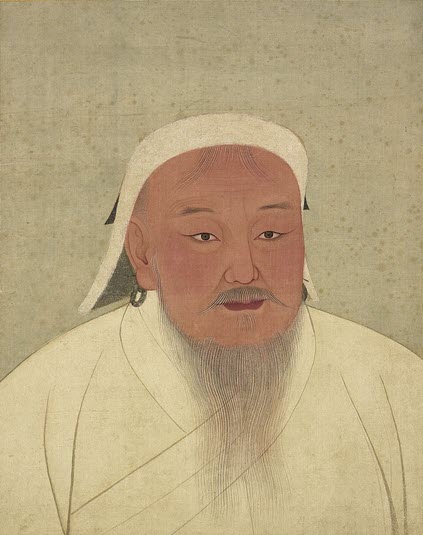
Genghis Khan, born initially with Temujin, was the founder and the first Great Khan (Emperor) of the Mongol Empire. With his evil and brutal plans, he united the Mongol tribes and conquered Central Asia.
He spent his teenage years being a slave and later started his military career at twenty.
He is known to be a brutal dictator and used to slaughter civilians en masse. The Tatar army killed his father, and to take on the army, he ordered the deaths of all the Tatar males who were taller than three feet.
He defeated the Taichi’ut tribe with his military power and boiled their chiefs alive to death.
He defeated the powerful tribe of Naiman and commanded power over central and eastern Mongolia. Other tribes and rulers surrendered and made peace with him after his consecutive victories, known as Genghis Khan. The name means ‘universal ruler.
He turned his rival survivors into human shields in his later battles. He had conquered much of Central Asia by 1227 and made invasions into Eastern Europe, Persia, and India.
His Great Empire stretched from central Russia to the Aral Sea in the west and from northern China to Beijing in the east. He died in 1227 as he never recovered after the internal injuries following a fall from a horse.
2. Idi Amin
| Life | 1925 - August 16, 2003 |
| Reign | 1971-1979 |

Idi Amin, the third president of Uganda, ruled as a dictator after launching a military coup in 1971.
He was named “Butcher of Uganda” and was responsible for around twenty-five thousand deaths due to torture, extra-judicial executions, corruption, and ethnic persecution.
As Amin’s behavior slowly worsened in the 1970s, he banned all Asians and handed the business to his associates. He also spent large amounts on the military. These acts led to a collapse of the economy.
Idi Amin’s policies include:
- The expulsion of Asians.
- The nationalization of business and industry.
- The expansion of the public sector.
All these policies destroyed the economy of Uganda. In less than a decade, the real value of salaries and wages fell by ninety percent.
The rival Uganda tribes were even unlucky as tens of thousands of them died. He fed his victims alive to crocodiles and took pride in keeping his political enemies’ decapitated heads in his freezer.
He was also known as “Lord of all the beasts of the Earth and Fishes of the Seas” and “Conqueror of the British Empire in Africa.”
In 1979, he was overthrown of his power by the Tanzanian troops and forces of the Uganda National Liberation Front, and so he fled to Saudi Arabia.
Amin launched an attack on Tanzania in 1978, which was unsuccessful in distracting Uganda’s internal problems. He was responsible for the deaths of three hundred thousand Ugandans during this period.
Amin never expressed any remorse for his cruel acts and was a subject of a Hollywood movie, Last King of Scotland.
1. Adolf Hitler
| Life | April 20, 1889 - April 30, 1945 |
| Reign | 1933-1945 |
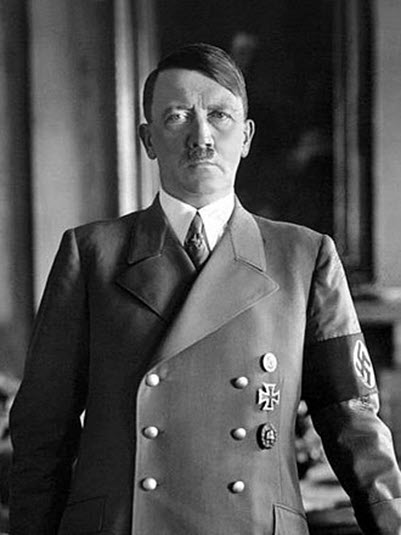
Adolf Hitler rose to power and was responsible for the cruelties in human history. He was known for his Nazi party and the slaughter and brutality during his dictatorship rule.
The separation of Jews in ghettos ended in the extermination of the Nazis, which was called the Final Solution to the Jewish Question.
He committed killings within Germany, occupied Europe, and the territories controlled by German allies.
The killing continued till the end of World War II in May 1945.
He was the German politician, founder of the Nazi party, and the Chancellor of Germany from 1933 to 1945.
Hitler’s mad mission induced by revenge, takeover, and ethnic cleansing nearly succeeded. He planned the extermination of Jews who were not found fitting in his nationalism agenda.
Anyone with more than three Jewish grandparents was killed. He ordered them to identify Jews, seize their property, and schedule trains to deport them.
Companies fired Jews, and universities dismissed Jewish faculty and students and were used as slave laborers.
The Jews surrendered all personal property as they entered the concentration camps, and laundered valuables were stolen from the victims.
He ordered the racial murder of around eleven million people, out of which six million were Jews. His foreign policy triggered World War II, which took approximately seventy million lives.
Anyone who opposed his rule was put into concentration camps and killed heartlessly with poisonous gas chambers. Most people included Jews, Christians, Gypsies, women, children, and mentally disabled people.
Few words to describe him are hate, racism, autocracy, and nationalism. He committed suicide in May 1945; the Third Reich lost battle after battle, and Germany entirely surrendered.
Conclusion
A few of the nation’s worst, brutal, and evil willed people have taken control of some of the most significant positions of the world. One would expect these leaders would change the country in betterment; meanwhile, they planned on much crueler things than one could imagine.
The ultimate aim, however, of all of these leaders was world power and invincibility.
Even though some of these events could be dismissed due to lack of definitive evidence, still considering the activities of some of the world leaders in this era, it does not look quite impossible.
The proverb’ live by the sword, die by the sword’ seems quite fitting for these brutal dictators as history is proof.
